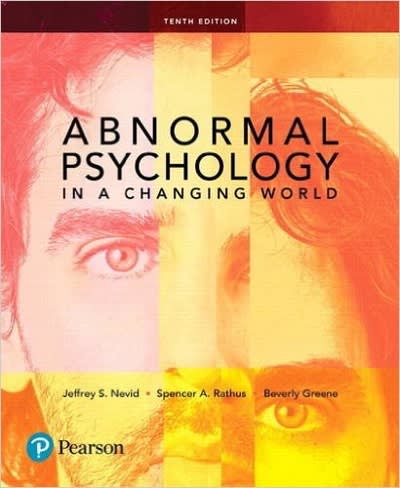In many comparable countries, drugs are prescribed much less frequently for childhood disorders than they are in
Question:
• In many comparable countries, drugs are prescribed much less frequently for childhood disorders than they are in the United States. What does this suggest? The rising use of psychiatric drugs in recent years to treat ADHD, depression, and other psychological disorders in children has been nothing short of explosive. More than 6% of American children and teens take psychiatric medications, most commonly stimulant medication for ADHD (“By the Numbers,” 2015; Mann, 2013; Olfson, Druss, & Marcus, 2015).
The use of stimulant drugs for treating ADHD has jumped dramatically in recent years—up about twentyfold since the 1980s
(Sroufe, 2012). More than 70% of children with ADHD receive stimulant medication (CDC, 2015f). These drugs are also being used, and increasingly so, with preschoolers as young as 2 to 5 years of age (Novotney, 2015). Nearly 3% of youths are on antidepressants, which are used to treat depression, panic disorder, and eating disorders. Increasing numbers of young people are also receiving other psychiatric drugs, including mood stabilizers (anticonvulsants), antianxiety drugs, sleep medications, and even powerful antipsychotic drugs (Olfson, King, & Schoenbaum, 2015).
Two flashpoints in the controversy concern the use of powerful antipsychotic drugs and the use of Ritalin and other stimulant drugs to control hyperactivity. Antipsychotic drugs such as Risperdal and Zyprexa (discussed in Chapter 11) used to treat schizophrenia in adults have become more widely used in treating ADHD, even though these drugs are not approved for that purpose and their effects on brain development remain unclear (Correll &
Blader, 2015; Olfson, King, & Schoenbaum, 2015). These drugs carry risks of serious side effects, including metabolic disorders that can lead to significant weight gain and high blood cholesterol levels and to potentially irreversible tic disorders, such as tardive dyskinesia (also discussed in Chapter 11). Potent antipsychotic drugs are also used to treat disruptive behaviors in children and teens, including aggressive and impulsive behavior (Correll &
Blader, 2015). The fact that boys are more likely to be treated with antipsychotics than girls suggests they are being used more to control disruptive behaviors than to control psychotic symptoms
(Olfson, King, & Schoenbaum, 2015). (See further discussion in Thinking Critically: The Bipolar Kid on page 528.)
With so many children receiving powerful psychiatric drugs, critics claim we are too ready to seek a “quick fix” for problem behavior rather than examining contributing factors, such as family conflicts, that may take more effort and time to treat. If a child is not sitting quietly at his or her desk doing schoolwork, there is pressure to find a chemical solution. Young people who become accustomed to using powerful psychiatric drugs to control negative feelings may be discouraged from finding other ways of managing them (Sharpe, 2012).
Step by Step Answer:

Abnormal Psychology In A Changing World
ISBN: 9780134484921
10th Edition
Authors: Jeffrey S Nevid, Jeffrey S Nevid PhD, Spencer A Rathus, Beverly Greene, Beverly Greene PhD






